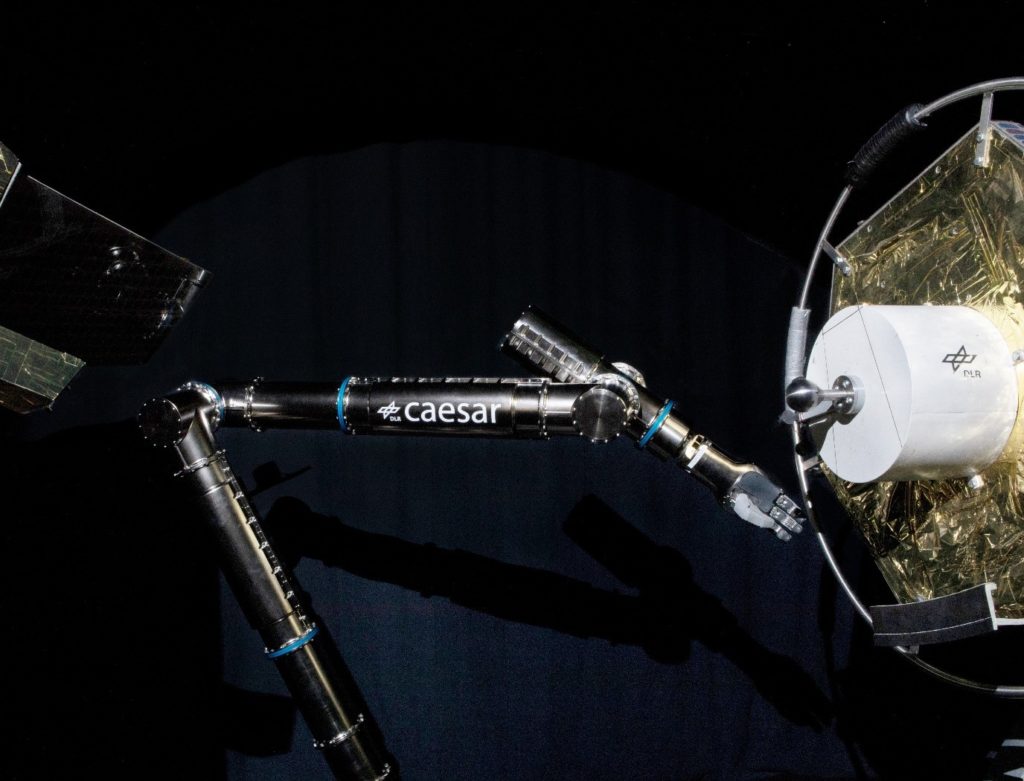The CAESAR robotic arm and SpaceHand for orbital servicing and active debris removal in orbit
On-Orbit Servicing includes all handling, maintenance and repair activities for space systems in orbit. While these services were still performed directly by astronauts on the Hubble telescope in Low Earth Orbit (LEO), for example, robot-based systems are now being designed for use in any Earth orbit.
Compliant Assistance and Exploration Space Robot (CAESAR)
CAESAR is the space-qualified equivalent of current service robots in manufacturing and Human-Robot Collaboration (HRC). The technology is designed to enable CAESAR to perform a variety of different orbital services in space. These include, for example, the refuelling, maintenance and repair of satellites, the removal of space debris, as well as the assembly of structures in space.
CAESAR’s performance is based on intelligent, sensitive joints. The individual joints can be arranged flexibly in different sequences, depending on the mission requirements. This makes the robot scalable – the number of joints and the length of the connecting elements can be adjusted almost at will. The robotic arm has seven joints to approximate the flexibility of a human arm.
CAESAR brings the capabilities of current intelligent and sensor-based service robots into space.
SpaceHand
SpaceHand is a robotic hand with multiple fingers, designed for service use in space. Thanks to its sensitivity and dexterity, it is an excellent tool for performing the complex tasks involved in handling and repairing components that are not entirely standard. It has the same dexterity as an astronaut with their glove during an extravehicular activity. SpaceHand is space qualified and suitable for long-term use in geostationary orbit.
Link:
German Aerospace Center (DLR)
Institute of Robotics and Mechatronics
Dr. Gerhard Grunwald · Email gerhard.grunwald@dlr.de
Maximilian Maier · Email Maximilian.Maier@dlr.de
